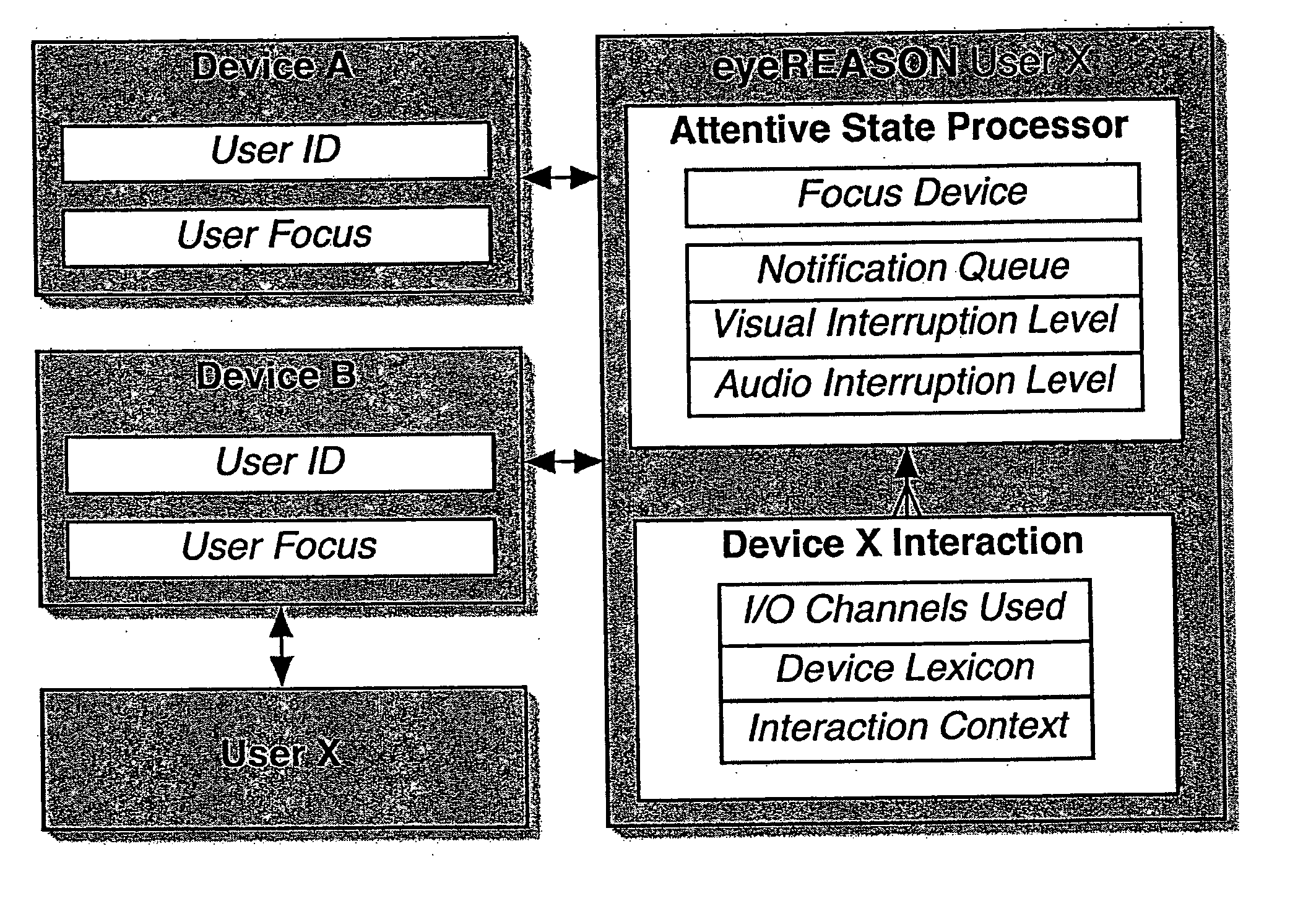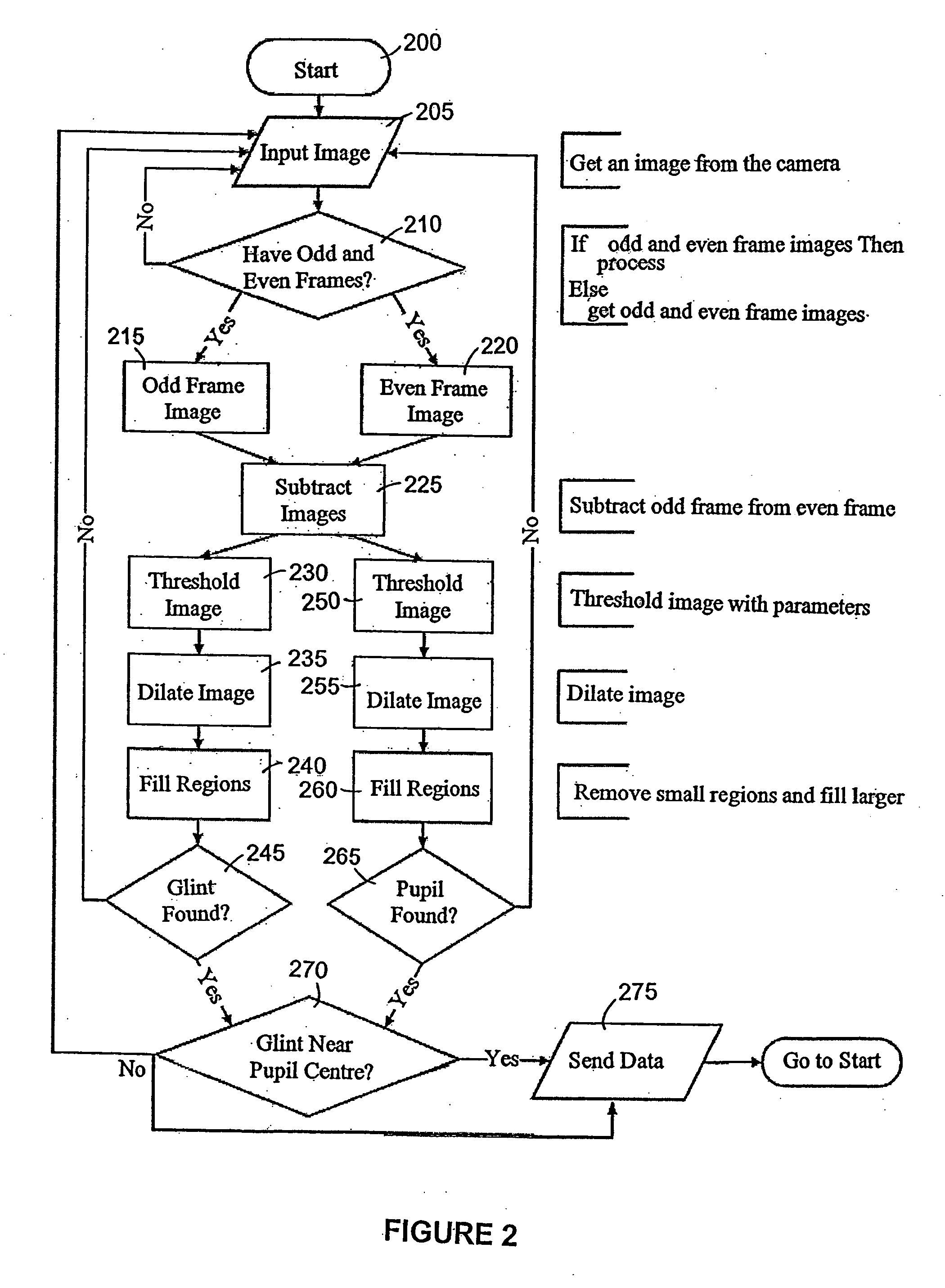Method and apparatus for communication between humans and devices
a communication method and technology for devices, applied in the field of attentive user interfaces, can solve the problems of lack of effectiveness and efficiency of such interactions, and inability to improve device-initiated interactions or communications
- Summary
- Abstract
- Description
- Claims
- Application Information
AI Technical Summary
Benefits of technology
Problems solved by technology
Method used
Image
Examples
example 1
Attentive Cell Phone
[0095] In this example, an attentive user interface was used to apply some of the basic social rules that surround human face-to-face conversation (discussed above) to a personal electronic device, in this case a cell phone. However, the embodiment described in this example could be implemented in any electronic device or appliance.
[0096] The subtlety of interruption patterns typically used during human face-to-face communication is completely lost when using cell phones. Firstly, a person making a call usually is unaware of the status of interruptability of the user being called. Secondly, there is limited freedom in choosing alternative channels of interruption. Thirdly, the channels that do exist do not allow for any subtlety of expression. In this example, an attentive cell phone was created by augmenting a Compaq iPAQ handheld with an attentive user interface employing a low-cost wearable eye contact sensor for detecting when a user is in a face-to-face co...
example 2
Telephone Proxy
[0104] Mediated communications systems such as a telephone typically require callers to interrupt remote individuals before engaging into conversation. While previous research has focused on solving this problem by providing awareness cues about the other person's availability for communication, there has been little work on supporting the negotiation of availability that typically precedes communication in face-to-face situations. Face-to-face interactions provide a rich selection of verbal and non-verbal cues that allow potential interlocutors to negotiate the availability of their attention with great subtlety.
Attentive Telephone
[0105] In this example we present a mechanism for initiating mediated conversations through eye contact. In our attentive telephone, referred to herein as “eyePHONE”, telephones were equipped with an attentive user interface including an eye proxy and an eye contact sensor. The eye proxy serves as a surrogate that indicates to a user th...
example 3
Audio / Video Applications
[0114] Attentive user interfaces using eye contact sensors may function to direct video cameras, or recording facilities, or to deliver audiovisual content. By mounting an eye contact sensor on a camera, and connecting its signal to the recording of this camera, an automated direction system can automatically switch to the camera currently looked at by a presenter.
[0115] Similarly, televisions and other audiovisual content delivery systems can be augmented with eye contact sensors to determine whether that content is being viewed, and to take appropriate action when it is no longer viewed. In combination with a personal video recording system, this may involve tracking user attention automatically for various shows, skipping commercials on the basis of perceived attentiveness, modulating volume level or messages delivered through that medium, or live pausing of audiovisual material.
[0116] Further, in a video conferencing or other teleconferencing system, e...
PUM
 Login to View More
Login to View More Abstract
Description
Claims
Application Information
 Login to View More
Login to View More - R&D
- Intellectual Property
- Life Sciences
- Materials
- Tech Scout
- Unparalleled Data Quality
- Higher Quality Content
- 60% Fewer Hallucinations
Browse by: Latest US Patents, China's latest patents, Technical Efficacy Thesaurus, Application Domain, Technology Topic, Popular Technical Reports.
© 2025 PatSnap. All rights reserved.Legal|Privacy policy|Modern Slavery Act Transparency Statement|Sitemap|About US| Contact US: help@patsnap.com



